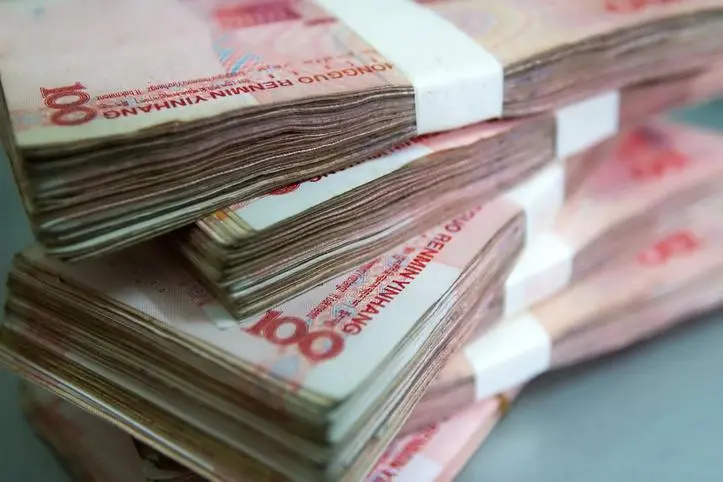PHOTO
SHANGHAI - China's yuan extended losses against the dollar on Friday and looked set for its worst week in more than 2-1/2 years, as market participants wondered if the sizeable fall this week was a policy response to counter economic slowdown. A hawkish U.S. Federal Reserve, the vanishing Chinese yield advantage and rising concerns over domestic economic growth have dragged the yuan, or renminbi, to seven-month lows.
The yuan's losses accelerated after a breach of the psychologically critical 6.4 per dollar, with the onshore yuan traded at 6.4692 by midday on Friday, a loss of 1.5% against the greenback for the week, which is the biggest weekly drop since August 2019.
"The macro outlook for China and the renminbi have certainly shifted significantly over the last several weeks on account of the COVID-driven lockdowns and disruptions in large parts of the country, especially Shanghai," said Alvin Tan, Asia FX strategist at Royal Bank of Canada.
But, some stakeholders were actually "quite happy" with such yuan weakness, which could alleviate pressure on Chinese exporters that are suffering from lockdowns, traders said.
"Export growth is likely to slow, so allowing some weakness in the yuan at this point is fine," said a trader at a Chinese bank.
Multiple traders said they have not yet seen state-owned Chinese banks, which usually act on behalf of the central bank, appear in the market to stem the yuan's losses as they are prone to during periods of rapid moves, which they felt was a sign of official approval for some depreciation.
The yuan's trade-weighted basket index, a gauge that measures its value against that of its trading partners, eased to a two-month low of 104.25 on Friday. China is keen to keep the index in a certain range to make sure the country isn't disadvantaged in external trade. In yuan options trading, the implied volatility and risk reversals only showed mild yuan depreciation pressure ahead.
Some market participants said China's ample FX deposits acquired by the private sector since the pandemic, coupled with the People's Bank of China's (PBOC) FX policy management via its daily fixing, could prevent the yuan from sinking too fast and too far.
On Friday, the PBOC set the midpoint rate at a six-month low for the yuan at 6.4596 per dollar, but it was 45 pips firmer than Reuters' estimate of 6.4641. While a much weaker-than-expected fixing seen on Wednesday "was a strong policy greenlight for CNY weakness, the fix today could also be a message to check exuberant USD/CNY bulls," analysts at Maybank said in a note.
China's foreign exchange deposits hovered at a record high of $1.05 trillion at the end of March. "Based on the pandemic outbreak in various cities places in China and the economic growth challenges, along with a more hawkish Fed", UBS Global Wealth Management revised down its forecast for the yuan to trade at 6.55 per dollar at end-June from 6.40 previously.
(Reporting by Winni Zhou and Andrew Galbraith; Editing by Christopher Cushing)





















